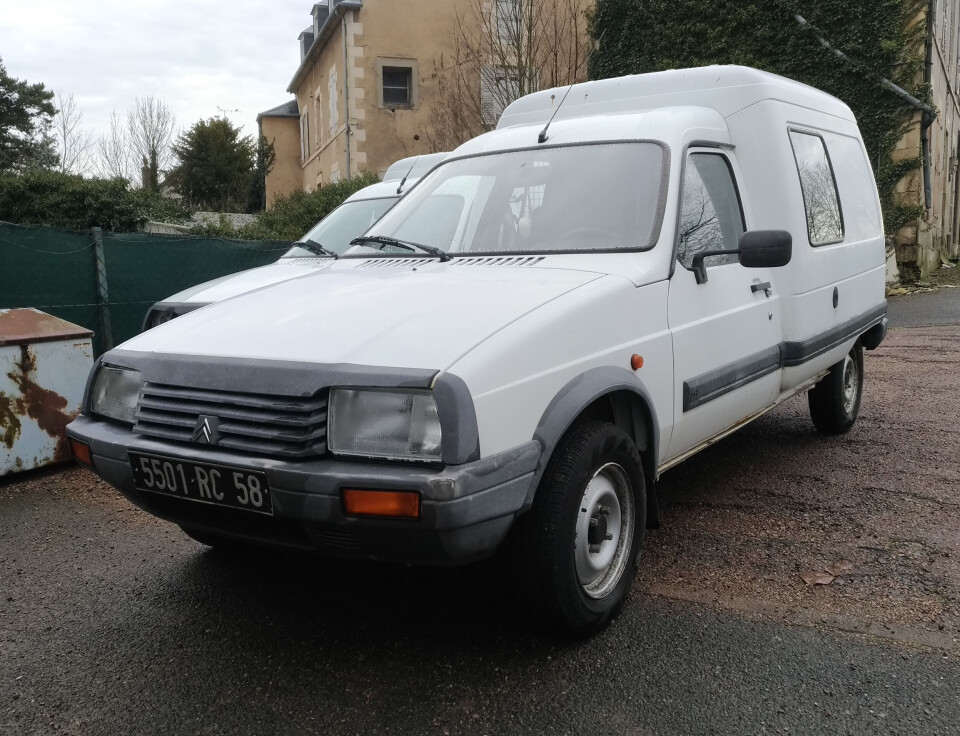-
Duck Cold! Four French phrases to use when it is freezing outside
We remind you of French expressions to use to describe the drop in temperature
-
When and why do we say le moral dans les chaussettes?
We explore this useful expression that describes low spirits
-
The origins and meaning of tirer les marrons du feu
As Christmas approaches, we look at a phrase to describe someone who takes advantage of a situation
Why discontinued Citroën C15D vans are back in fashion in France
The decision to stop making them led to numerous conspiracy theories but their rarity today is giving them a new lease of life as a collector’s item

Speculation that the little Citroën C15D van could become a collectable ‘youngtimer’ vehicle has begun to appear in some sections of the French media.
The vans have been part of French rural life since 1984, but the C15D is gradually becoming a rare sight on the roads.
Citroën stopped building the vans in 2006 after selling 1.18 million of them, officially because tools used in the factory in Spain which made them were worn out.
The decision was not popular at the time, and conspiracy theories abounded, including that it was to save face after poor sales of the first Berlingo vans, designed by a committee from scratch to replace the C15.
Others blamed new management at the time, brought in by Peugeot, who, the story goes, decided that modern, anonymous vehicles were the key to success and were embarrassed by the C15D’s distinctive shape.
Accountants were probably excluded from the process because, by 2006, with the initial investments paid for and original parts found from other vehicles, the C15D was the Citroën with the biggest percentage profit margin. Citroën claimed too that the 1.7 litre diesel engine in most of the vans did not meet new anti-pollution standards, and that none of its more modern engines would fit into the small engine bay.
It is true that the vans do not have any airbags, air conditioning, particle filters or ABS brake systems, but if the company really wanted to, it could have made the changes.
Although the C15D’s 1.7-litre, 70HP engine is reputed to be unbreakable – apart from the occasional head gasket blowing – other parts of the van, such as the drive shafts, can start to show wear after 20 years or so.
The motor was among the last to use an old-fashioned mechanical injector instead of more modern ‘common rail’ electronic injectors, meaning it is relatively thirsty, drinking eight litres of diesel per 100 km.
Stricter contrôle technique tests mean there are now owners who have to decide if it is really worth paying money for repairs, especially if they are able to buy a new van and benefit from hefty government incentives of up to €2,000 to have the old C15D scrapped.
In spite of this, it is still possible to buy C15Ds from any online second-hand car website in France, with prices of €3,000 for examples with a contrôle technique not uncommon.
In mid-July, there was even a rare 1993 4x4 conversion by specialist Dangle, with only 355,174km on the clock, which had an asking price of €6,800.
The C15D was put together on a budget to replace the 2CV Acadiane vans, and its success seemed to take the company by surprise. It used the front half of the small Visa car, and married it with a back featuring suspension borrowed from a Peugeot 305 station wagon.
From this unlikely mix came a vehicle with distinctive looks, which was remarkably comfortable and easy to drive.
The distance between the rear wheel arches, which protruded into the back, was calculated to allow a standard pallet to pass, allowing for easy loading and unloading.
Pallets could not be too heavy, though. The maximum load in the back was limited to 600kg for most vans, although some were made with boosted suspension to allow 750kg.
The vans could reach autoroute speeds, but were happier cruising at 110km/h or meandering down rural roads.
This inspired a folk-rock group from Ariège called SP to compose a song about the impossibility of overtaking a C15D, which has become a YouTube hit.
Another mystery which occupied corners of the internet for years was why all the big brains in Citroën’s design department could not come up with a fuel tank and cap which did not leak – disgraceful brown diesel stains on the hindquarters are a signature of the C15D.
French car magazine Youngtimers, which specialises in vehicles from the 1980s which are now fashionable as collector cars, devoted a long article to the C15D in a recent issue, so it is possible that the familiar boxy shape will continue to be impossible to overtake on country roads for years to come.
Trying to find the author, or to get a Citroën expert to comment on the collectability of the vans, proved to be difficult.
“Personally, I do not see them as collectable at all,” laughed one press officer for Citroën.
“They are still around in large numbers, and so many people have had one that the cachet of owning one is not very great.”
Citroën enthusiast Henri Fradet, who runs a museum in Castellane, in Alpes-de-Hautes-Provence, with three large buildings full of Citroëns from before the merger with Peugeot, sniffed: “I really do not see that they will be worth collecting.
“They are recent, and they are diesel, which these days means the resale value is very low.”
Related articles:
Electric cars: northern France to become battery-making corridor
Two Citroën models sold in France recalled for fire hazard risk
French car collector helps other owners find old tyres to fit
























